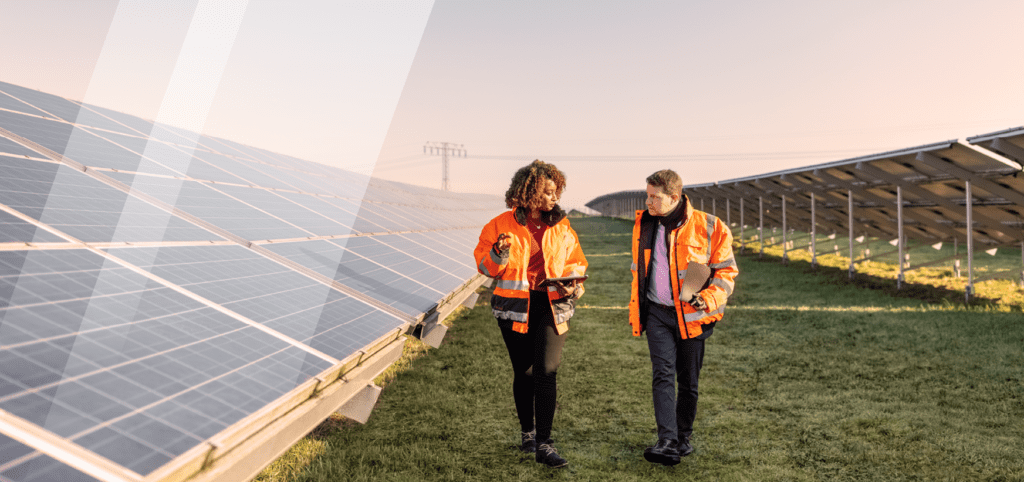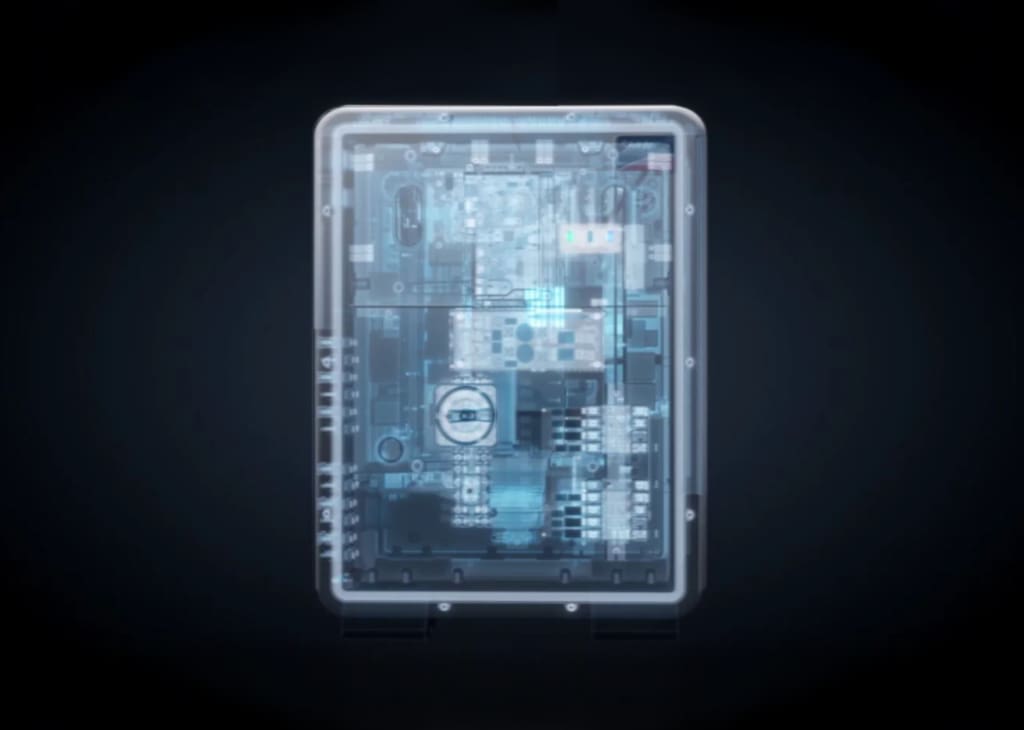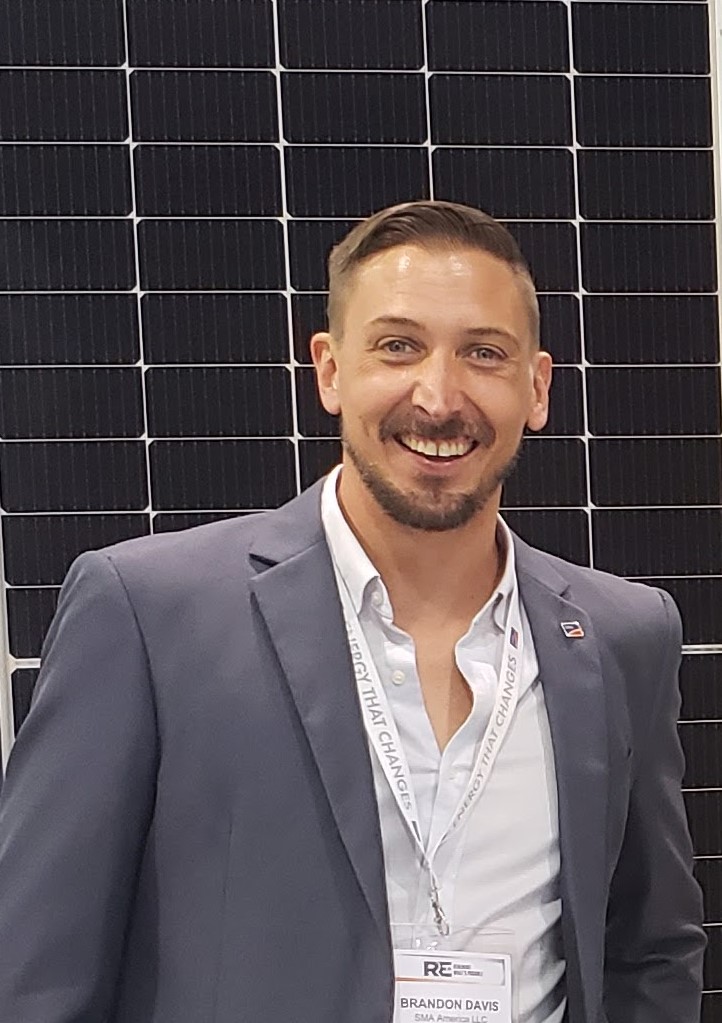Solar Chat: Frank Berring Anticipates 2025 Market Trends and SMA’s Proactive Innovations

As we welcome 2025, it’s the perfect moment to analyze the trends shaping the U.S. large scale energy market and how these developments have impacted both our customers and SMA America. From the accelerating adoption of utility scale renewables and energy storage to evolving regulatory landscapes, the energy transition has gained remarkable momentum. At the same time, it’s clear that challenges like grid stability and market complexity require innovative, forward-thinking solutions.
I sat down with Frank Berring, Head of Business Development for Large Scale at SMA America.
TM: Now that 2024 has drawn to a close, what key trends have you observed in the U.S. large scale division market in this last year, and how do you see those trends impacting our customers’ experiences and aligning with SMA’s value proposition?
FB: That’s maybe the perfect question Trish. It’s critical to our success that our customers see value in everything we do, and that in the end, it’s our customers’ success that enables our own. 2024 was maybe not the beginning of the major market trends I see, but it was certainly a year of real action towards addressing the challenges presented by those trends.
Let’s start with recognizing that renewables-based generation has incredible momentum within the energy markets, and with the scaling of energy storage solutions, most stakeholders are deeply supportive of broad deployment of renewables – and it shows! Looking into the backlog of interconnection applications, you’ll find almost all new generator applications are for renewables.
TM: We will continue to watch renewables-based generation and its momentum within the energy markets. What other trends did you see in 2024, that maybe accompanied the first?

FB: The simultaneous retirement of fossil fuel-based generators, and growth of inverter-based resources (IBRs) presents significant risk to bulk power system reliability. Stability services, which I’ll just broadly define as the nearly instantaneous active or reactive power responses to deviations in the grid’s frequency or voltage, are becoming an area of concern, since those services are historically, provided by synchronous generators in the network. We’re seeing a lot of retirements, or planned retirements, of those assets. So, IBRs need to step in to fill that void.
The good news is that these stability services can be provided by Battery Energy Storage Systems (BESS) with Grid Forming inverter controls, which are likely to be mandated (to some degree) by System Operators in the near future. SMA’s grid forming BESS solutions are already commercially available, fully compliant with emerging functional requirements, and highly flexible to provide specific stability services needed for projects.
TM: And is it correct, that this has some rather broad implications on the regulatory side of the market?
FB: Absolutely Trish, the evolution of regulatory requirements would be a second major trend getting a lot of focus from the industry. When grid reliability is at risk, FERC and NERC take action – such as FERC Order 901 as a prominent example -which often requires changes to both how existing assets are operated, and processes or requirements for interconnecting new ones. This has increased market complexity—and risk—for our customers.
SMA’s anticipated these challenges, and thus we’re prepared to deliver new kinds of value-add services to our customers, such as advanced electromagnetic transient modeling, grid forming plant design support, hardware-in-the-loop testing, battery management system integration, and innovative plant control solutions just to name a few. While SMA is renowned for premium power conversion hardware, we now provide end-to-end solutions, helping customers optimize and de-risk projects from development to operation.

TM: Are there any other factors you see impacting the energy transition, particularly in large scale applications?
FB: Well, we can’t talk about market trends without discussing the scaling of BESS. Although BESS isn’t new, it’s now nearly ubiquitous in renewable generation applications, and developers are only getting started in capitalizing on it’s unique revenue stacking opportunities. For example, co-locating BESS enables renewable plants, like PV systems, to function as dispatchable generators, aligning seamlessly with market and system planning frameworks. Looking ahead to 2025, DC-coupled hybrid plants are a trend to watch. SMA offers the most integrated DC-coupled solution on the market, and its added value is poised to drive further adoption in the coming years.
TM: It sounds like SMA is very well positioned to provide high value solutions to our customers, especially the developer community, in the context of all those market trends and challenges. Can you give some insights into what SMA does “behind the scenes” to deliver products and services which are well aligned to market needs?
FB: We’re proud of SMA’s leadership in shaping the energy market and solving challenges that drive the renewable transition. Rather than reacting to industry changes, SMA actively works to define them through collaboration with key organizations.
In 2024, we engaged more deeply with bulk power industry groups than ever before:
- NREL (National Renewable Energy Laboratory): Longstanding collaboration on testing and simulations for emerging technologies, using SMA products in their research setups.
- EPRI (Electric Power Research Institute): Ad hoc partnerships addressing energy system challenges, including modeling, simulations, and testing.
- ESIG (Energy Systems Integration Group): Thought leadership on grid reliability and IBR technologies, sharing insights and learning from adjacent fields like system planning.
- DOE-Led Forums (e.g., i2X/DOE FIRST): Contributions to forums on transmission reliability standards, leveraging SMA’s global expertise to address U.S.-specific issues.
- NERC (North American Electric Reliability Corporation): Input on IBR capabilities, stability solutions, and adoption strategies for new standards like IEEE 2800-2022.
- ISOs/RTOs: Direct engagement with system operators to demonstrate IBR capabilities and accelerate renewables integration.
TM: That’s fantastic! These activities clearly support SMA’s Large Scale mission, but how do they set SMA apart in the U.S. market from our customers’ perspective?
FB: Our partners consistently tell us that SMA stands out, thanks to the customer-centric culture we’ve built across the company. Here’s the feedback we hear most often:
- Unparalleled Expertise: Decades of experience and leadership in industry standards help our customers achieve their project goals.
- Innovative Technology: Customers trust SMA’s proven track record to de-risk new technologies, like grid-forming inverters, enabling faster adoption and better business outcomes.
- End-to-End Support: Beyond delivering equipment, we offer full lifecycle support—from development to execution and long-term operation—acting as an extension of our customers’ teams.
- Trusted Leadership: SMA’s reputation as a reliable partner makes us the go-to OEM for safe, secure, and resilient systems.
- Risk Reduction: SMA solutions optimize projects by:
- Reliability: Quality and reliability are in our DNA. When issues arise, SMA leads the market in quickly resolving them and supporting customers.
- Ease of Interconnection: Our close industry collaboration delivers solutions which are aligned with market requirements, making interconnection approvals smoother and more successful.
- Optimized ROI: From project design to execution and revenue optimization, SMA helps customers deliver on forecasts and drive long-term success.
TM: To wrap up, thank you—it’s truly rewarding to be part of a team that works every day to create a better tomorrow, driven by a mission to enable a successful transition to renewable energy.
FB: The energy transition is as complex as it is promising. SMA’s leadership in shaping industry standards and its deep-rooted expertise make us the ideal partner for navigating this landscape. By aligning with SMA, developers and asset owners and operators gain access to cutting-edge solutions and an ally deeply involved in the industry’s most critical conversations.
For customers making inverter purchasing decisions in the U.S., remember no one is better positioned to support you than SMA. Let’s shape the future of renewable energy together.




Feel free to contribute!